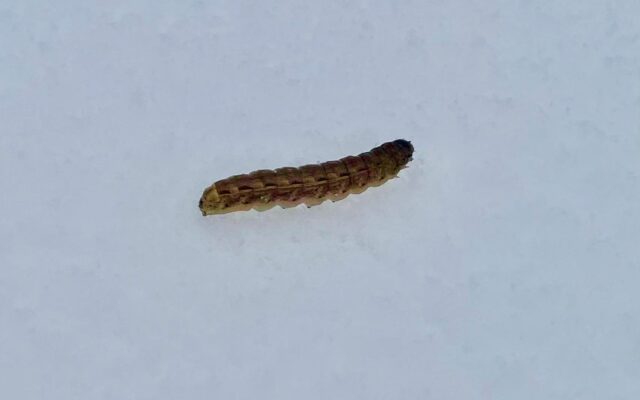
Snow-walking caterpillars are the latest example of Maine’s extreme weather
By Julia Bayly, Bangor Daily News Staff
First came the snow. Then came the caterpillars.
The caterpillars — the larval stage of the yellow underwing moth — have been in Maine since the 1970s, lurking below the snow every winter. But their unexpected activity over the weekend left folks around the state taking to social media asking about the black caterpillars crawling on top of the fresh snow.
Commonly called winter cutworms, the caterpillars are able to withstand cold temperatures and spend their winters feeding on grasses, roots and other herbaceous plants, according to Jim Dill, pest management specialist with University of Maine Cooperative Extension.
They are a gregarious species — for a caterpillar — traveling and feeding in groups. Which helps to explain why people were reporting seeing scores of them on the snow this past weekend.
Dill suspects the cutworms were especially active in the days leading up to the storm last week because the weather had been so unseasonably mild. The caterpillars are the latest example of weather extremes here in Maine that are changing the typical behaviors of local animals and plants.
“Think of it, we had green grass until very recently,” Dill said. “Then, just like that, they got caught on top of the snow.”
For the cutworms that were not able to burrow back down to the ground beneath the snow, they likely died, either from freezing or becoming an easy meal.
“If there were any birds around, they would have seen the cutworms,” Dill said. “The birds would have easily spotted these black worms on white snow and then, wham-bang, gotten them.”
Yellow underwing moths are a relatively recent invasive species in Maine, according to Dill. They are native to Europe and first showed up in Maritime Canada and New England in the 1970s.
Out west, they are considered a potential pest due to fears they could cause considerable damage to crops in a short amount of time, according to the Oregon State Extension Service.
How much damage the cutworm stage of the moth could cause depends largely on their numbers and specific environmental conditions.
So far, there is no indication gardeners or growers here have anything to worry about.
“Yes, if you get them in high enough numbers they can be a pest,” he said. “But so far we are not getting those numbers in Maine.”